Atmospheric detection methods
The main methods of atmospheric detection are: microwave radar sounding method, airborne or rocket sounding method, sounding balloon, satellite remote sensing, and LIDAR. Microwave radar cannot detect tiny particles because the microwaves sent to the atmosphere are millimeter or centimeter waves, which have long wavelengths and cannot interact with tiny particles, especially various molecules.
Airborne and rocket sounding methods are more costly and cannot be observed for long periods of time. Although the cost of sounding balloons is lower, they are more affected by wind speed. Satellite remote sensing can detect the global atmosphere on a large scale using on-board radar, but the spatial resolution is relatively low. Lidar is used to derive atmospheric parameters by emitting a laser beam into the atmosphere and using the interaction (scattering and absorption) between atmospheric molecules or aerosols and the laser.
Due to the strong directionality, short wavelength (micron wave) and narrow pulse width of the laser, and the high sensitivity of the photodetector (photomultiplier tube, single photon detector), lidar can achieve high precision and high spatial and temporal resolution detection of atmospheric parameters. Due to its high accuracy, high spatial and temporal resolution and continuous monitoring, LIDAR is rapidly developing in the detection of atmospheric aerosols, clouds, air pollutants, atmospheric temperature and wind speed.
The types of Lidar are shown in the following table:
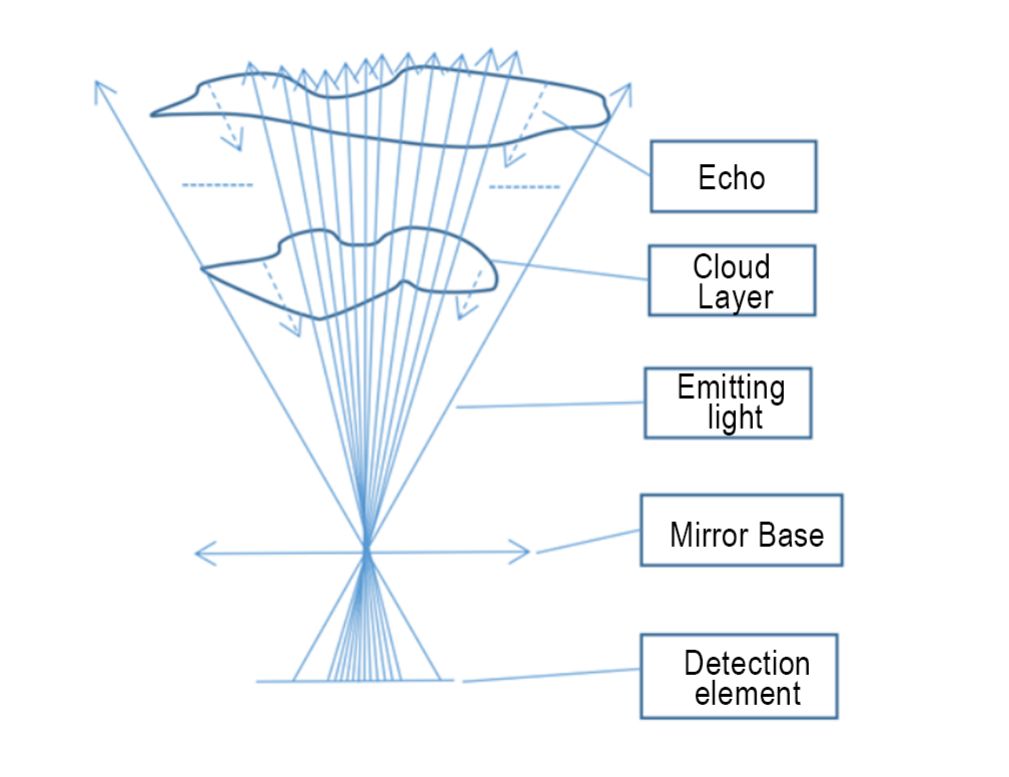
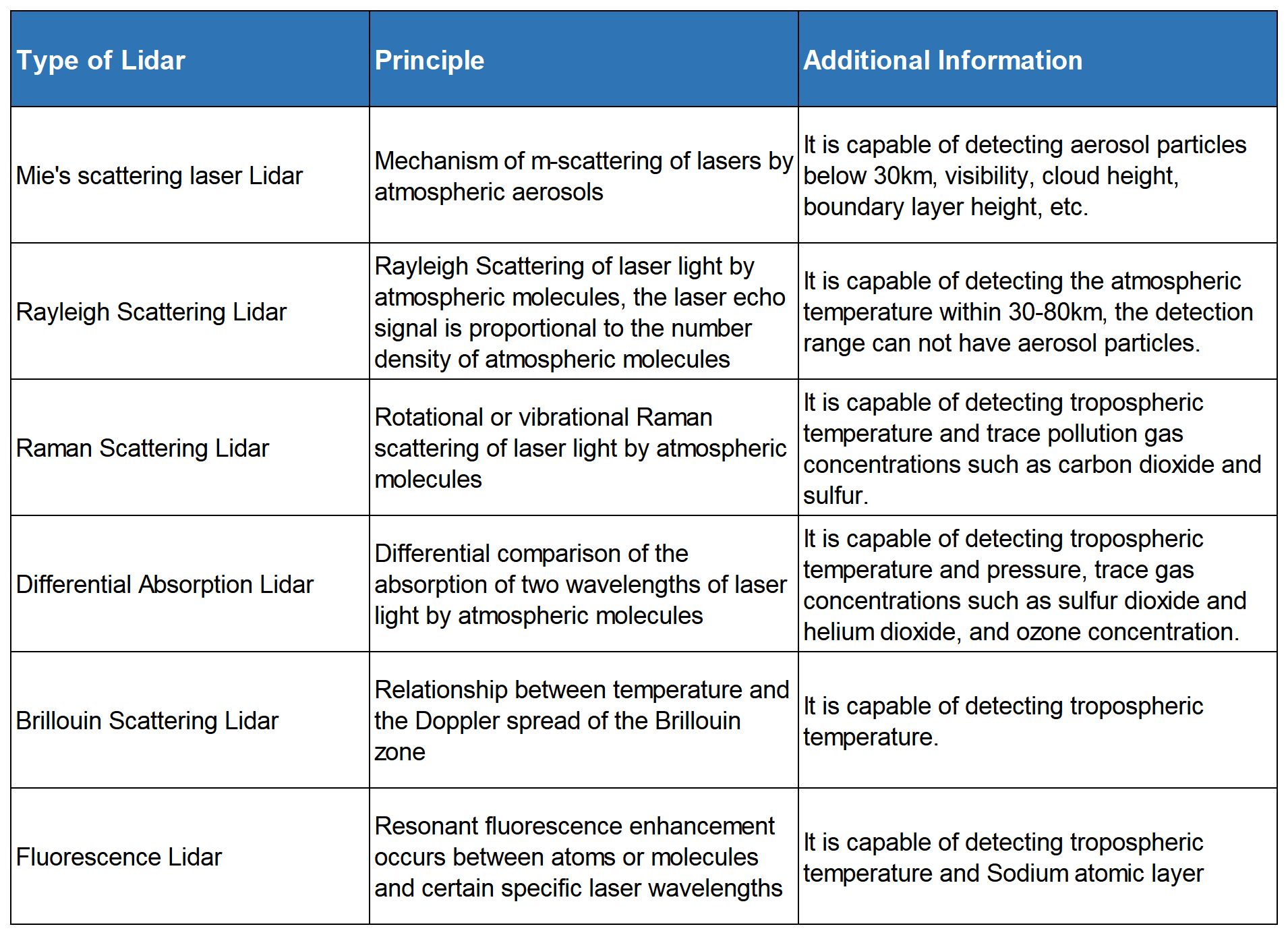
Atmospheric detection methods
The main methods of atmospheric detection are: microwave radar sounding method, airborne or rocket sounding method, sounding balloon, satellite remote sensing, and LIDAR. Microwave radar cannot detect tiny particles because the microwaves sent to the atmosphere are millimeter or centimeter waves, which have long wavelengths and cannot interact with tiny particles, especially various molecules.
Airborne and rocket sounding methods are more costly and cannot be observed for long periods of time. Although the cost of sounding balloons is lower, they are more affected by wind speed. Satellite remote sensing can detect the global atmosphere on a large scale using on-board radar, but the spatial resolution is relatively low. Lidar is used to derive atmospheric parameters by emitting a laser beam into the atmosphere and using the interaction (scattering and absorption) between atmospheric molecules or aerosols and the laser.
Due to the strong directionality, short wavelength (micron wave) and narrow pulse width of the laser, and the high sensitivity of the photodetector (photomultiplier tube, single photon detector), lidar can achieve high precision and high spatial and temporal resolution detection of atmospheric parameters. Due to its high accuracy, high spatial and temporal resolution and continuous monitoring, LIDAR is rapidly developing in the detection of atmospheric aerosols, clouds, air pollutants, atmospheric temperature and wind speed.
Schematic diagram of the principle of cloud measurement radar
Cloud layer: a cloud layer floating in the air; Emitted light: a collimated beam of a specific wavelength; Echo: the backscattered signal generated after the emission passes through the cloud layer; Mirror base: the equivalent surface of the telescope system; Detection element: the photoelectric device used to receive the weak echo signal.
Working framework of the cloud measurement radar system
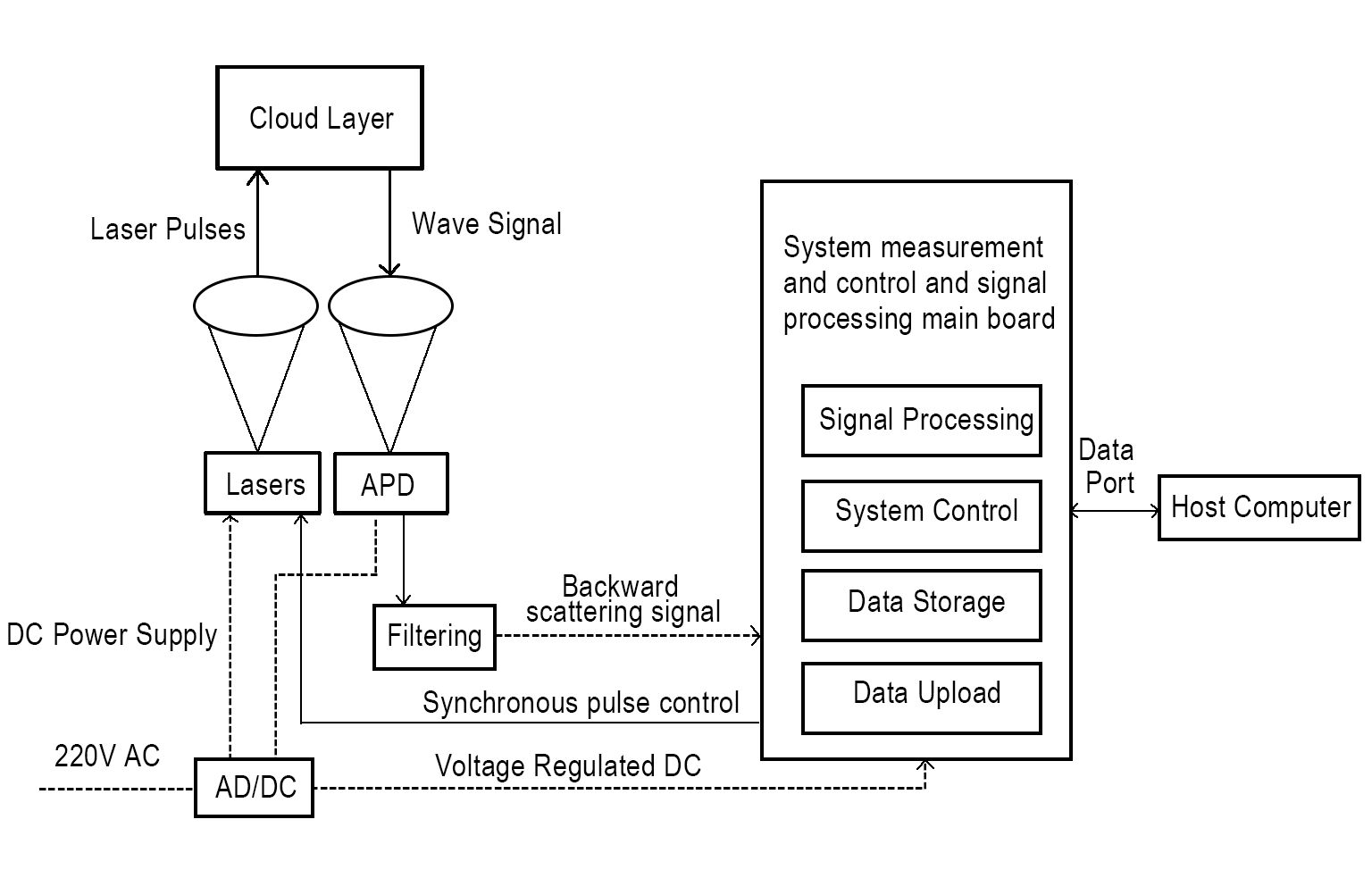
Lumispot Tech main technical parameters of the cloud measurement Lidar
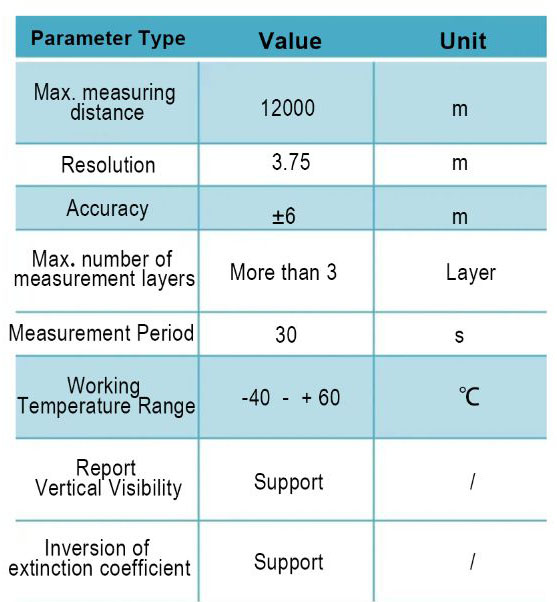
The Image of the Product
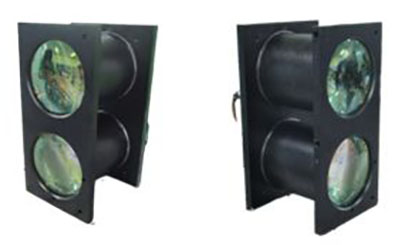
Application
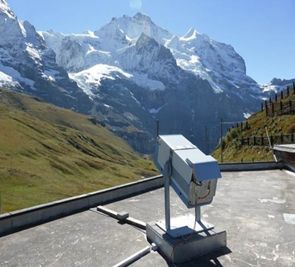
Products Working Status Diagram
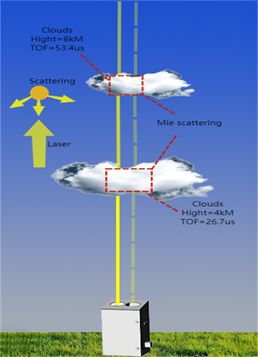
Post time: May-09-2023
